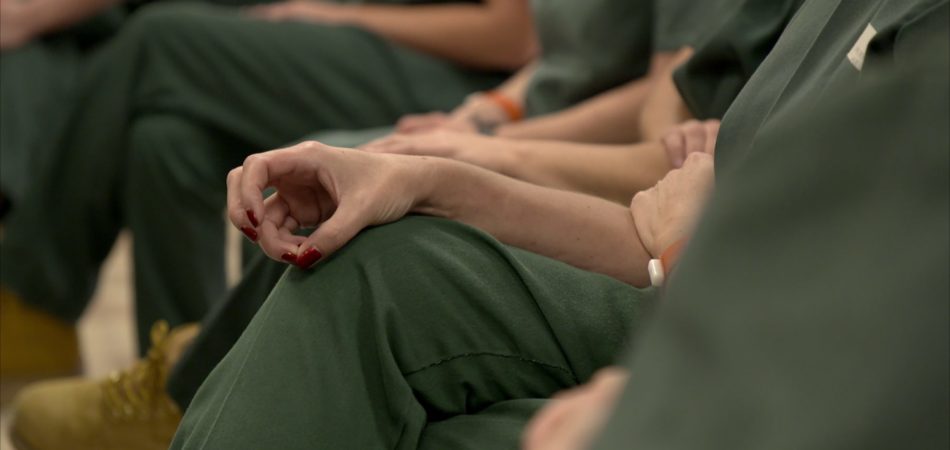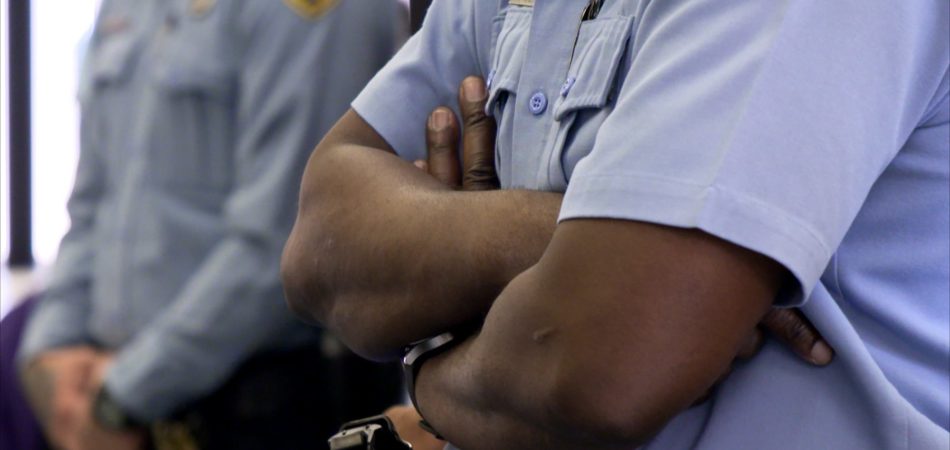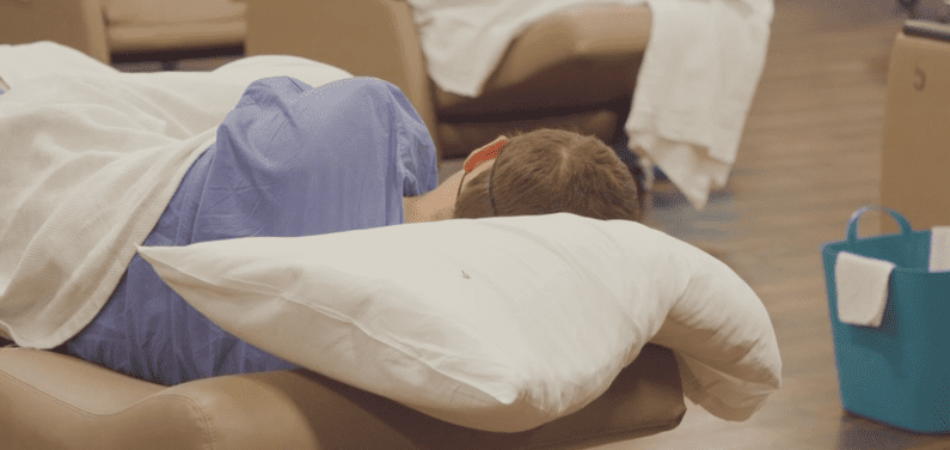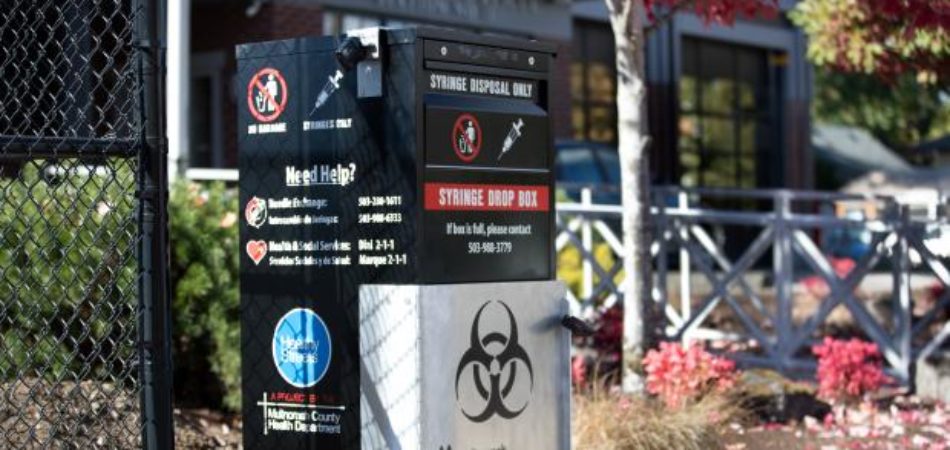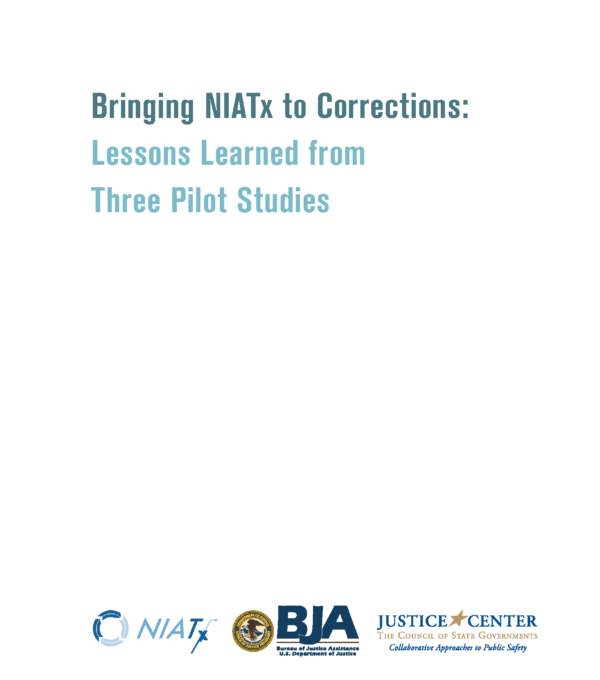Access to Treatment: Bringing NIATx to Corrections
Many people in the criminal justice system are in need of substance use treatment, but not all receive appropriate services. Approximately only 8 to 20 percent of people in correctional settings that need substance use treatment receive appropriate services, according to a 2013 study. And in the community, just 29 percent of adults with substance use disorders receive minimally adequate levels of care that meet accepted guidelines.
To guide improvement in this area, the CSG Justice Center partnered with NIATx, a learning collaborative that is part of the University of Wisconsin’s Center for Health Enhancement Systems Studies. The NIATx process improvement approach—developed based on research around the factors that are crucial to creating access to and retention in substance use disorder treatment—had already existed, and had been helping to remove barriers to substance use treatment and recovery for people since 2003.
To use these process improvements to connect to treatment people who are reentering communities from jail or prison, the CSG Justice Center worked with NIATx to create a two-part project called Access to Treatment: Bringing NIATx to Corrections.
Part I: Pilot Sites
From 2011 to 2013, the CSG Justice Center and NIATx brought the NIATx process improvement model to criminal justice agencies with a focus on the intersection between substance use disorder treatment and criminal justice systems.
The pilot sites were:
- DeKalb County, GA
- Durham County, NC
- The State of Maryland
In response to the issues these sites faced regarding data collection and monitoring, the project’s advisory board decided to develop process measures around the intersection points a person might encounter when they are involved with both the criminal justice and behavioral health systems. This effort became Part II of the project.
Part II: Interface Process Measures
The ability to track, collect, and use data was a challenge identified across the three pilot sites during the implementation of the NIATx process improvement model. To that end, interface process measures were developed to be a guide for the criminal justice and behavioral health fields on how the connection between the two systems can be tracked and used at various points along the Sequential Intercept Model.
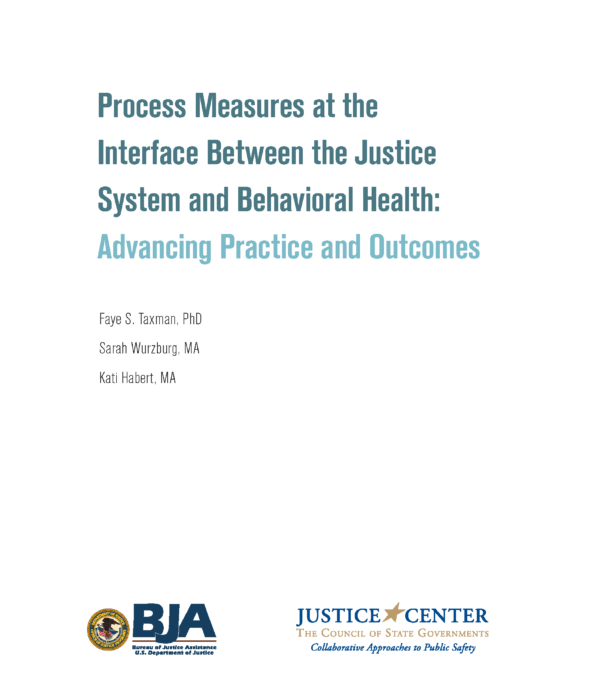
Between 2011 and 2013, the CSG Justice Center worked with NIATx—a learning…
Read More
On February 4, 2014, national leaders in the criminal justice and behavioral…
Read MoreA positive school experience, where a child feels secure, is essential for their well-being. However, for many children…
Read MoreWhen returning to their communities from criminal justice settings, people with behavioral health needs face barriers in accessing…
Read More Supporting Children of Incarcerated Parents: Reimagining School and Community Collaboration
Supporting Children of Incarcerated Parents: Reimagining School and Community Collaboration
A positive school experience, where a child feels secure, is essential for their well-being. However, for many children with incarcerated parents—one in 14 in the U.S.—school can feel far from safe due to stigma, trauma, and a lack of understanding.
Read More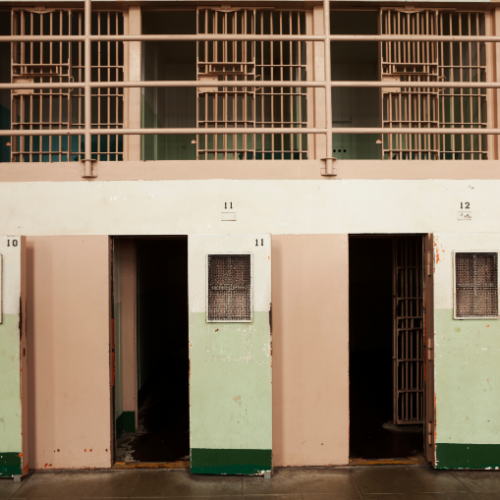 Bridging Communities and Correctional Systems: Q&A with CSG Justice Center Advisory Board Member Commissioner Nicholas Deml
Read More
Bridging Communities and Correctional Systems: Q&A with CSG Justice Center Advisory Board Member Commissioner Nicholas Deml
Read More
 Assigned to the Cloud Crew: The National Incarceration Association’s Hybrid Case Management for People with Behavioral Health Needs
Assigned to the Cloud Crew: The National Incarceration Association’s Hybrid Case Management for People with Behavioral Health Needs
When returning to their communities from criminal justice settings, people with behavioral health needs face barriers in accessing basic needs—including food, housing, employment, transportation, education, clothing, and substance use and mental health services—which increases their risk of experiencing a crisis.
Read More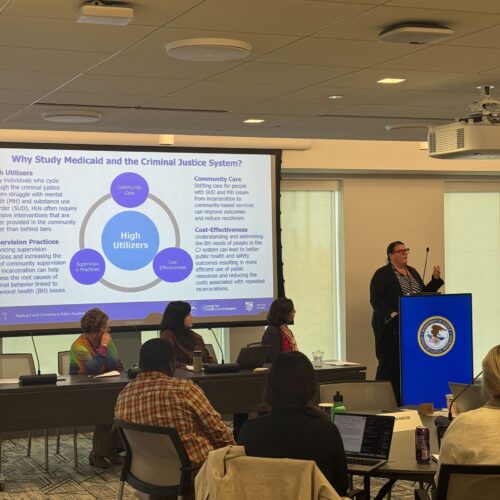 Meet the Medicaid and Corrections Policy Academy Mentor States
Meet the Medicaid and Corrections Policy Academy Mentor States
New Hampshire Department of Corrections Commissioner Helen Hanks presents at the Medicaid and Corrections Policy Academy in-person meeting.
Read More Taking the HEAT Out of Campus Crises: A Proactive Approach to College Safety
Taking the HEAT Out of Campus Crises: A Proactive Approach to College Safety
The sharp rise in school shootings over the past 25 years has led school officials across the U.S. to take a closer look at ways to keep students safe. For Chaffey College in Rancho Cucamonga, California, a tragic incident at a nearby university hit close to home and spurred campus leaders to revisit their own school’s threat assessments and crisis responses.
Read More